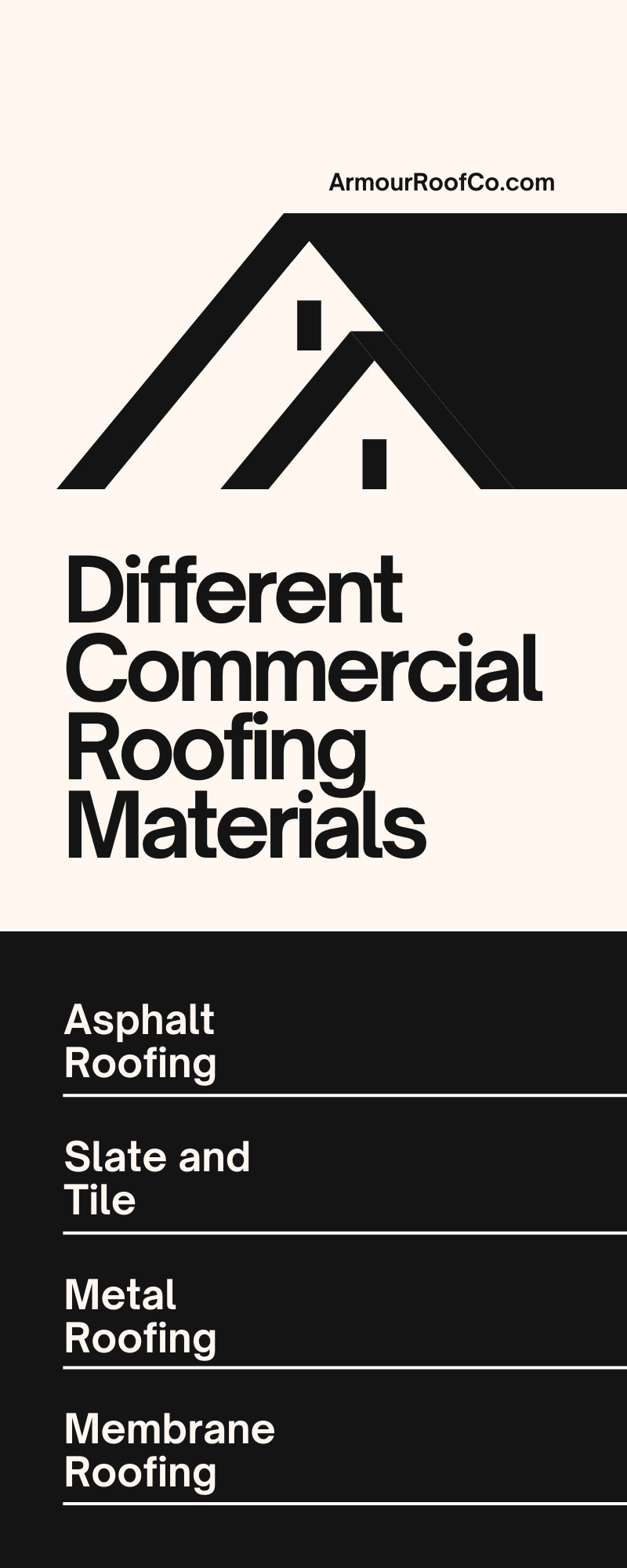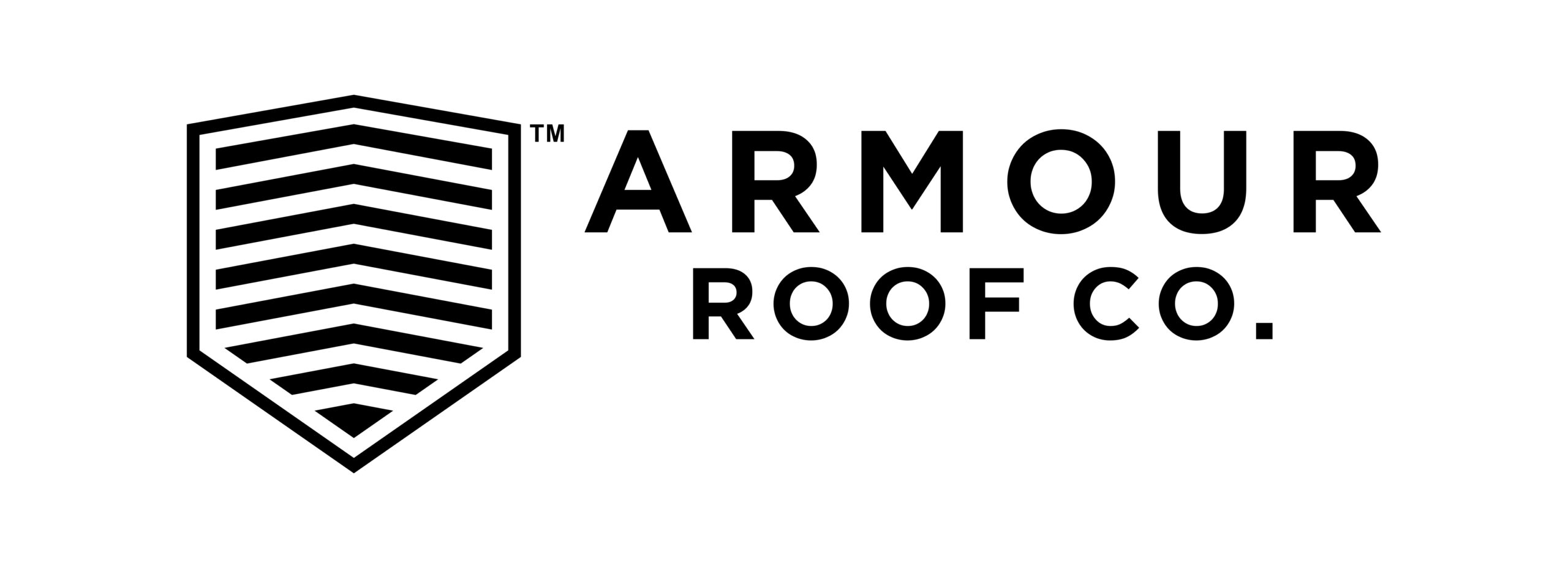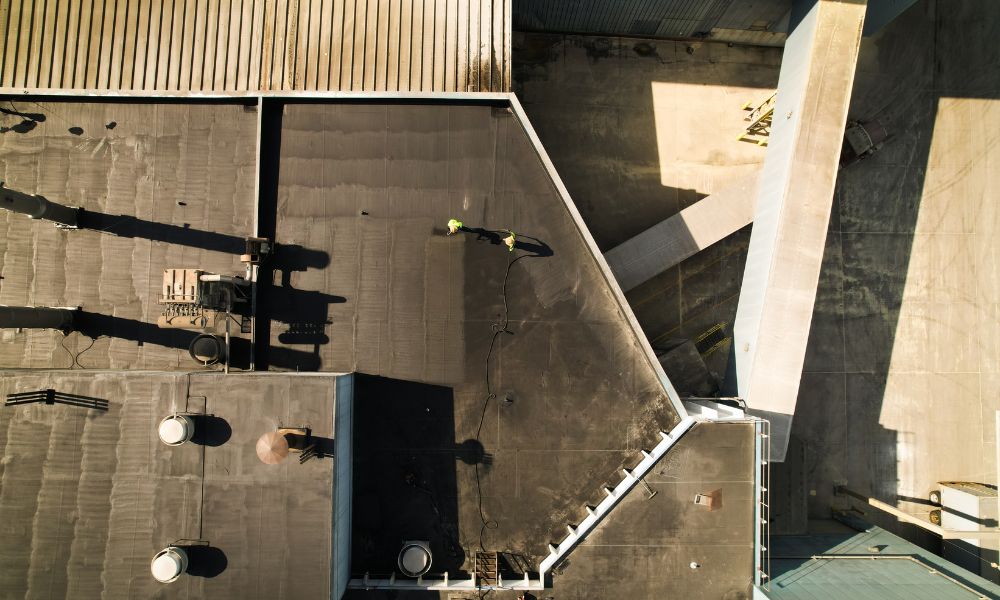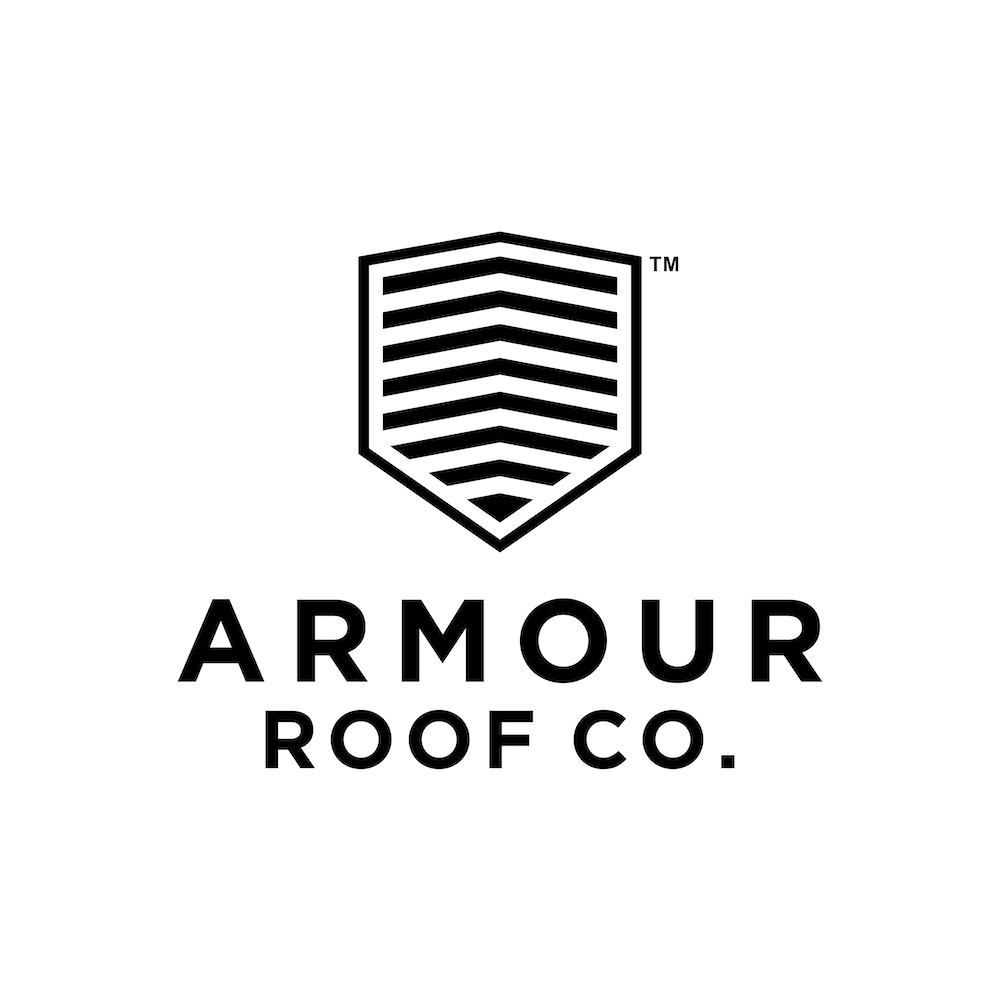Are you in the market for a new roof over your head, specifically for a commercial building? Here are four different commercial roofing materials and the pros and cons of each.
Asphalt Roofing
Most people associate asphalt with driveways and parking lots, but it’s actually a relatively solid commercial roofing material. There are two main types of asphalt roofing – built-up roofing (BUR) and modified bitumen roofing systems. Built-up roofing originated in the mid-1800s and was an effective method of roofing larger-scale buildings. BUR is also considered the first flat roof design used in construction. Consisting of multiple alternating layers of asphalt and reinforced fabrics, BUR also features a top layer of aggregate (typically gravel or stone).
Modified bitumen roofing systems are very similar to standard BUR but with a few key differences related to the composition of the asphalt material. Asphalt is combined with either polymerized rubber or plastic and is reinforced with a flexible, durable waterproof membrane (made from fiberglass). This modified membrane provides better longevity to asphalt, increasing protection even in low-temperature environments. Additionally, it’s less expensive and difficult to install compared to traditional BUR. Since 1975, modified bitumen roofing systems have usurped BUR designs in regularity and popularity.
Pros
There are certainly other roofing materials that boast longer lifespans – however, asphalt roofing, when installed properly, can easily last for two decades or more. Seeing as the upfront costs of installing and maintaining asphalt roofing is low, you’re getting a lot of value out of your investment. More importantly, your roof enjoys all the benefits of asphalt material, including UV resistance and fire resistance. Lastly, asphalt roofing supports foot traffic better than most other alternatives.
Cons
There are two main concerns related to asphalt roofing that are significantly concerning. For starters, the installation process is fairly complex and requires expert care and experience. Roof problems are much more common when this installation is conducted improperly. Another consideration you must make before investing in asphalt roofing is the layered design. These layers are excellent at preventing weather damage and leaks, but they also make it difficult to locate damages and leaks. So when problems arise, you might find it challenging to resolve the issues quickly.
Slate and Tile
Slate and tiles have been used for roofing in America since the early days of the colonies. Clay gets fired and shaped to produce tile, while slate is typically quarried (although you can purchase synthetic versions of both tile and slate) and made into shingles. Shingles and finished tiles are then attached to a framework and hung in rows. These frames are overlapped to produce a quality-looking roof. However, most slate and tile roofs are found on residential homes instead of commercial buildings.
Pros
The most significant pro related to slate and tiles is longevity – tile can last 100 years, and slate can remain intact for 150! Synthetic slate and tile are more affordable than natural materials but last 50 years. Aside from longevity, many people like these roofing options for the uniform visual appeal. Slate and tile are adequately fire and pest resistant and can handle extreme weather conditions. Lastly, tile and slate are highly energy efficient and don’t require much maintenance.
Cons
The installation process for slate and tile roofing is complex and delicate, meaning it costs a bit more than the other materials on this list. Along with higher up-front costs, installing slate and tile is more difficult than other methods, and sometimes shingles are dropped and broken. Slate and tile are also very heavy, which is something you must consider when designing your building. Lastly, you can’t safely support foot traffic on a slate or tile roof.
Metal Roofing
There’s no more popular option for commercial roofing than metal materials. They’re applicable for low-sloped and even steep-sloped roofs. Unfortunately, many misconceptions about metal roofs sometimes deter people from installing them – mainly concerns over noise, lightning conduction, and high costs.
In truth, metal roofs are no louder than other roofing options; do not attract lighting strikes, and remain low-cost throughout their lifetime. Your building may require a specific type of metal roofing, such as zinc, copper, aluminum, galvanized steel, or tin. Luckily, there are plenty of customization options related to materials and design for you to consider when purchasing metal roofing.
Pros
The pros associated with metal roofing are endless! First and foremost, many metal roofs boast a life span of about 50 years. And when repair services are required, costs are typically low, and repairs are often quick and painless. Furthermore, metal is a recyclable material that helps limit negative impacts on the environment. The reflective nature of metal also helps lower energy bills for your business. And lastly, metal provides excellent fire resistance and allows rain and snow to fall off effortlessly.
Cons
There are only two major concerns related to metal roofing. Mainly, the upfront installation costs are often slightly more expensive than other materials – however, the low maintenance requirements of metal roofing often negate this significant initial investment. The other concern relates to rust, which can cause damage to the structural integrity of your roof. Luckily, protective measures such as metal coatings prevent rust from forming and causing major issues.
Membrane Roofing
Membrane roofing is an increasingly popular commercial roofing option that’s most effective for flat surfaces. Also known as single-ply roofing, this material consists of synthetic polymer sheets with thermoplastics and synthetic rubbers. This composition of thermoplastics is easily re-heated and re-molded.
Pros
Single-ply membrane roofing is 100% ultraviolet resistant and even prevents microorganisms from thriving. Additionally, it’s one of the more durable options for you, with a lifespan of up to 40 years – replacement and repairs are also low so that you won’t be shelling out tons of money during these four decades. Membrane roofing is also immensely environmentally friendly and naturally resistant to fire.
Cons
Single-ply membrane roofing sometimes lacks a hard-top protective layer that’s essential for guarding synthetic materials. Dropped tools and screws can penetrate the rubber layer and cause holes, leading to significant leaks. The installation process for membrane roofing is also made more complex when considering rooftop accessories (fans, pumps, vents, etc.), as a piece of the membrane material must be customized to account for these objects.
These different commercial roofing materials certainly have their own unique pros and cons, but ultimately, your best option relies on budget and building needs. Determine which solution will provide the best results before moving forward with installation. If you need expert care when installing and maintaining your commercial roofs, consider our superior services here at Armour Roof Co!




